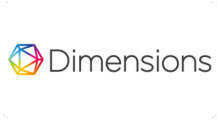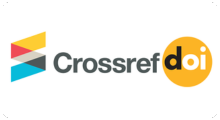Can We Validate the Value? Valuing Automotive and Component Sub-Sector Companies Listed on the Indonesia STOCK Exchange during the Covid-19 Pandemic Crisis
DOI:
https://doi.org/10.11594/ijmaber.03.02.09Keywords:
discounted cash flow, intrinsic value, pandemic, relative valuation, valuationAbstract
This study provides a comprehensive fundamental-based value analysis of firms using Discounted Cash Flow (DCF) and Relative Valuation (RV) approaches. This study reveals how these approaches behave in valuing firms during a crisis such as the one caused by the current covid-19 pandemic and how to validate the results as well as correct them if the results was invalid. The object of the study is companies in the automotive and component sub-sector listed in Indonesia Stock Exchange (IDX) in 2020. The company's historical financial data between 2016 and 2020 are used to predict its financial behavior over the next five years under three scenarios: optimistic, moderate, and pessimistic. From the study employing the DCF method, the following results were obtained: ASII and INDS stocks were overvalued in all scenarios, GJTL were undervalued in all scenarios, and SMSM were overvalued in pessimist and moderate scenarios while undervalued in optimist scenario. Correction upon intrinsic values of SMSM and ASII is required since the result from RV analysis imply that the DCF results of both companies are not entirely valid, which indicates that the pandemic crisis has significantly affected the value of both companies. Investment recommendations for both ASII and INDS were to sell the stocks while for both SMSM and GJTL were to buy the stocks.
Downloads
References
Damodaran, A. (2012). Investment Valuation: Tools and Techniques for Determining the Value of any As-set. University Edition. John Wiley & Sons.
Fibrianto, N. H., & Hendrawan, R. (2018). Oil and Gas Companies and Their Fair Value: Evidence from Indonesia Stock Exchange. Icib 2019, 106–116. https://doi.org/10.5220/0008428001060116
Indonesia Stock Exchange [https://www.idx.co.id/media/9628/idx_annually-statistic_2020.pdf], July 2021
Ivanovska, N., Ivanovski, Z., & Narasanov, Z. (2014). Fundamental Analysis and Discounted Free Cash Flow Valuation of Stocks at Macedonian Stock Ex-change. UTMS Journal of Economics, 5(1), 11–24.
Ivanovski, Z., Ivanovska, N., & Narasanov, Z. (2014). Fundamental analysis and discoiunted free cash flow valuation of stocks at Macedonian Stock Ex-change.
Ministry of Industry [https://www.kemenperin.go.id/download/18384], July 2021.
Neaxie, L. V, & Hendrawan, R. (2017). Stock valuations in telecommunication firms: Evidence from Indone-sia stock exchange. International Journal of Eco-nomic Perspectives, 11, 455–464.
Steiger, F. (2010). The Validity of Company Valuation Using Discounted Cash Flow Methods. ArXiv.Org, Quantitative Finance Papers.
Tandelilin, E. (2010). Portofolio dan Investasi Teori dan Aplikasi. First Edition. Kanisius.
Zemba, S., & Hendrawan, R. (2018). Does Rapidly Grow-ing Revenues Always Produce An Excellent Com pany ’ s Value ? DCF & P / E Valuation Assessment on Hospital Industry. E-Proceeding of Manage-ment, 5(2), 2045–2060.
Downloads
Published
Issue
Section
License
Authors who publish with this journal agree to the following terms:
Authors retain copyright and grant the journal right of first publication with the work simultaneously licensed under a Creative Commons Attribution License that allows others to share the work with an acknowledgement of the work's authorship and initial publication in this journal.
Authors are able to enter into separate, additional contractual arrangements for the non-exclusive distribution of the journal's published version of the work (e.g., post it to an institutional repository or publish it in a book), with an acknowledgement of its initial publication in this journal.
Authors are permitted and encouraged to post their work online (e.g., in institutional repositories or on their website) prior to and during the submission process, as it can lead to productive exchanges, as well as earlier and greater citation of published work (See the Effect of Open Access).



















